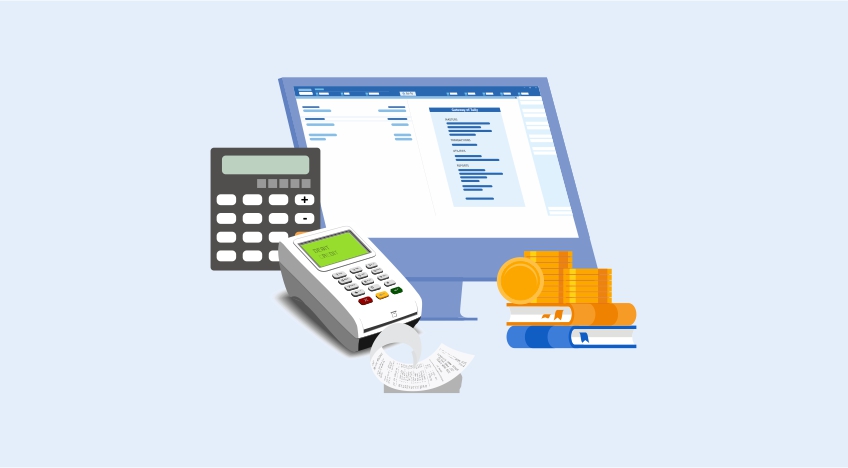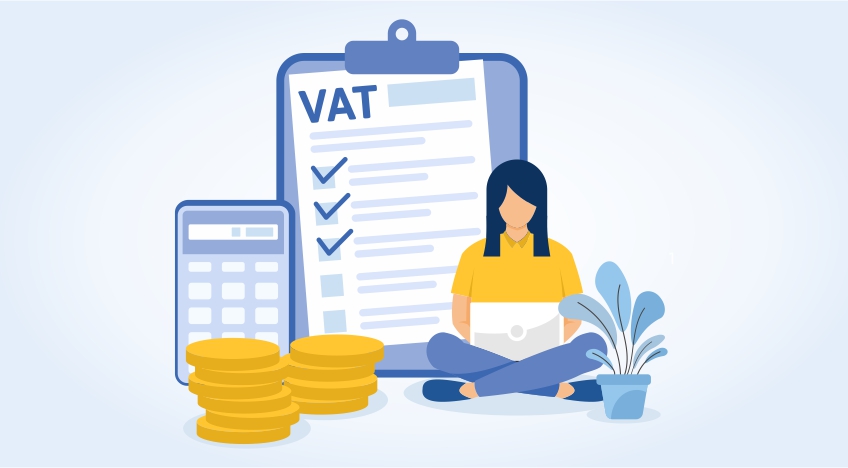- How to configure new ETR under eTIMS
- How to generate Invoice on eTIMS
- Components of e-invoicing system
As a business registered under VAT-taxpayer, it's crucial to understand the process to stay tax compliant. Most businesses today use business software to generate invoices and manage business activities. In such a case, the process of generating an electronic tax invoice begins from the ERP, to the control unit (Type C), and finally, with the KRA.
This article will walk you through the process of generating electronic tax invoices under the new TIMS system. This will give a snapshot of the e-invoicing process for all businesses using business software such as accounting software, ERP etc.
|
What is the Difference Between an Electronic Tax Register (ETR) and an Electronic Tax Invoice? |
What are the Requirements of the New Electronic Tax Invoice System? |
How to configure new ETR under eTIMS?
Here's a quick walkthrough on how to configure new ETR (Type C):
- First and foremost, you need to check if your existing ERP/accounting software is compliant with the new TIMS regulation.
- Post that, validate if the software can integrate with the new ETR.
- Get the ETR from the KRA-approved ETR suppliers list, which complies with the new regulation.
- Once the ETR is configured with the software, the device will be auto activated through iTax. This step enables invoice validation and transmission to KRA.
- Post this, the VAT taxpayer is required to acknowledge the ETR assigned to them by responding to the confirmation e-mail from iTax
How to generate Invoice on eTIMS?
- Record the sales invoice using the business software ( ERP, Accounting Software)
- Once the invoice is saved, the business software will automatically share the details with the control unit
- The control unit will verify the details and sign the invoice with QR Code, invoice no and control unit serial no
- Next, the supplier prints the invoice with a QR code and controls the unit invoice number and serial number
Components of e-Invoicing system
If you look at the process, there are 3 broad components of e-invoicing in Kenya. The business software, Control unit and the KRA portal. Let's understand all three components in detail.
At the ERP/business software
Since you already have an existing ETR for submitting your taxes, you might need to upgrade it to comply with the new KRA TIMS regulations.
Your upgraded ETR should be able to integrate with the ERP software you use in your daily business operations. If you don't have a VAT-compliant ETR, you can purchase one from KRA-approved ETR manufacturers and suppliers listed on the KRA website. Get in touch with them, and they will provide you with the right ETR (Type C) that complies with the new regulations.
Once you purchase a compliant ETR, it will be configured with your ERP. Post that, you'll receive a confirmation e-mail from iTax with your details and those of the ETR you purchased. Next, you need to acknowledge the e-mail to activate the ETR. The ETR will then be activated, enabling you to validate and transmit your invoices to KRA.
Whenever you make a sale and issue sale invoices to your wateja (your buyers), the activated ETR will sign the and transmit an electronic version of the invoices from your ERP to KRA in real-time or near real-time over the internet.
In the Control Unit
The generated invoices from the ERP or accounting software pass over to the control unit before reaching the KRA. Every electronic tax register has a connected control unit that enables it to confirm the validity of the generated invoices.
It confirms whether the tax computations are correct and issues a control unit invoice number. This number is unique to every electronic invoice. Additionally, the control unit checks the validity of the buyer's PIN provided, and transmits the information to TIMS for storage. Along with the invoice number, the control unit also adds a QR code and control unit serial number.
Here is a quick checklist that a supplier needs to check before issuing the invoices to the customer:
- The transaction details: A brief description of the goods and services exchanged, the quantity of supply, the unit of measure, the total gross amount of goods, and the time and date of invoice issuance.
- The tax details: These include the buyer's PIN, the current VAT tax rates, the taxable value, the total gross amount, and the total tax paid.
- The control unit invoice number: The unique number used to identify each tax invoice generated by the tax register.
- The control unit serial number: The unique number used to identify each tax register
- The quick response code (QR Code): The unique code that the taxpayer uses to confirm the validity of the electronic tax invoice.
At the KRA
Once the control unit confirms the validity of the electronic tax invoices, they are transmitted to the KRA for verification and authentication.
The KRA iTax Portal has a tax invoice number checker, which verifies the control unit invoice number and confirms the accuracy of tax details indicated on the e-invoice.
Manage Your Electronic Tax Invoices with TallyPrime
As a business owner, staying tax-compliant is easy once you understand the requirements of the new electronic tax regime.
However, the processes involved can be overwhelming, given that invoicing is a key aspect of businesses. With robust business management software like TallyPrime, you don't need to worry about generating tax invoices.
The software handles your VAT-compliance activities, from e-invoicing to return filing. This gives you more time and enables you to redirect your energy to focus on kukuza biashara (business growth). Take a free demo today and see how the software makes VAT compliance hassle-free.
Read More:










